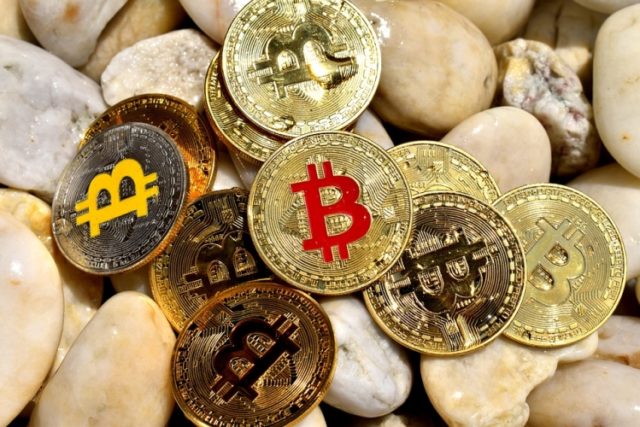Here's what you need to know to trade today Wednesday April 3:
The US Dollar (USD) lost strength following the bullish action seen on Monday and the Dollar Index closed in negative territory on Tuesday. On Wednesday, Eurostat will publish preliminary data for the Consumer Price Index (CPI) for March. Later, the US economic calendar will offer the ADP private employment reports and the ISM services PMI for March. During US trading hours, Federal Reserve Chairman Jerome Powell will speak about the economic outlook at the Stanford Forum on Business, Government and Society.
Price of the US Dollar this week
Below is the percentage change of the US Dollar (USD) against the main currencies quoted this week. The US dollar was the strongest currency against the Swiss franc.
| USD | EUR | GBP | CAD | AUD | JPY | NZD | CHF | |
| USD | 0.21% | 0.50% | 0.38% | 0.27% | 0.15% | 0.23% | 0.79% | |
| EUR | -0.21% | 0.28% | 0.18% | 0.07% | -0.06% | 0.01% | 0.56% | |
| GBP | -0.50% | -0.29% | -0.11% | -0.22% | -0.36% | -0.27% | 0.28% | |
| CAD | -0.38% | -0.17% | 0.10% | -0.11% | -0.24% | -0.17% | 0.39% | |
| AUD | -0.28% | -0.06% | 0.22% | 0.10% | -0.13% | -0.06% | 0.51% | |
| JPY | -0.16% | 0.08% | 0.33% | 0.26% | 0.14% | 0.05% | 0.62% | |
| NZD | -0.24% | -0.01% | 0.25% | 0.17% | 0.06% | -0.08% | 0.54% | |
| CHF | -0.77% | -0.55% | -0.27% | -0.38% | -0.49% | -0.62% | -0.54% |
The heat map shows the percentage changes of the major currencies against each other. The base currency is chosen in the left column, while the quote currency is chosen in the top row. For example, if you choose the Euro in the left column and scroll down the horizontal line to the Japanese Yen, the percentage change that appears in the box will represent EUR (base)/JPY (quote).
US Treasury yields continued to rise on Tuesday and major stock indexes turned lower after the opening bell. Despite these developments, the Dollar struggled to outperform its rivals as market participants began to adjust their positions ahead of key data releases. Early Wednesday, the 10-year yield remains comfortably above 4.3% and US stock index futures are trading slightly lower. Meanwhile, the USD index remains in a consolidation phase below 105.00 after losing 0.2% on Tuesday.
He EUR/USD gained recovery momentum on Tuesday and erased much of Monday's losses. Early on Wednesday, the pair fluctuates in a tight range below 1.0800.
Preview of inflation in the Eurozone: Less pressures on prices could weigh down the Euro
He GBP/USD It closed slightly higher on Tuesday and stabilized above 1.2550 in the European session on Wednesday.
He USD/JPY posted marginal losses on Tuesday, but remained within the very narrow trading channel above 151.50.
He Gold extended its winning streak to a sixth consecutive day on Tuesday and closed at a new all-time high above $2,280. XAU/USD remains near all-time highs early on Wednesday.
He AUD/USD posted modest gains on Tuesday and entered a consolidation phase above 0.6500 in mid-week.
Inflation FAQ
What is Inflation?
Inflation measures the rise in prices of a representative basket of goods and services. General inflation is usually expressed as a month-on-month and year-on-year percentage change. Core inflation excludes more volatile items, such as food and fuel, which can fluctuate due to geopolitical and seasonal factors. Core inflation is the figure economists focus on and is the target level of central banks, which are mandated to keep inflation at a manageable level, typically around 2%.
What is the Consumer Price Index (CPI)?
The Consumer Price Index (CPI) measures the variation in prices of a basket of goods and services over a period of time. It is usually expressed as a percentage of inter-monthly and inter-annual variation. Core CPI is the target of central banks as it excludes food and fuel volatility. When the underlying CPI exceeds 2%, interest rates usually rise, and vice versa when it falls below 2%. Since higher interest rates are positive for a currency, higher inflation usually translates into a stronger currency. The opposite occurs when inflation falls.
What is the impact of inflation on currency exchange?
Although it may seem counterintuitive, high inflation in a country drives up the value of its currency and vice versa in the case of lower inflation. This is because the central bank will typically raise interest rates to combat higher inflation, attracting more global capital inflows from investors looking for a lucrative place to park their money.
How does inflation influence the price of Gold?
Gold was once the go-to asset for investors during times of high inflation because it preserved its value, and while investors often continue to purchase gold for its safe haven properties during times of extreme market turmoil, this is not the case. most of the time. This is because when inflation is high, central banks raise interest rates to combat it.
Higher interest rates are negative for Gold because they increase the opportunity cost of holding Gold versus an interest-bearing asset or placing money in a cash deposit account. On the contrary, lower inflation tends to be positive for Gold, as it reduces interest rates, making the shiny metal a more viable investment alternative.
Source: Fx Street
I am Joshua Winder, a senior-level journalist and editor at World Stock Market. I specialize in covering news related to the stock market and economic trends. With more than 8 years of experience in this field, I have become an expert in financial reporting.







